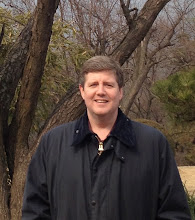GX5-1 is bright. Very, very bright. So bright it saturates most of Chandra's detectors. In fact, I had to get special permission to even observe it on the HRC, and had to use a far corner of the detector even then to avoid possibly causing problems on-axis. So, understanding the HETG spectrum is going to be tricky. I've started by downloading the observation from the archive (ObsID 5888), and then realized it was done in a special mode. This isn't surprising, since the observation was done by the team that built the HETG, and they like to do hard problems that require tricky solutions. So I downloaded a pre-processed version as well from the TGcat archive, which was put up by the same team to make analyzing HETG data easier.
[As an aside, the archive also lists scientific papers that have been written using a given dataset, and it shows that the HETG team has not yet written a paper on this data. Although the data are now public, and thus available to all, it would rather rude of me to use their data to do their science without even mentioning it to them. The archive does list the abstract to the original proposal they wrote, which indicates their goal was to study absorption edges of Si, S, and Mg from the interstellar medium. Since I'm not going to do any of that science, and in fact am only using their data in passing to do other work, this shouldn't be a problem. I'll still let the team know what I'm up to, just to be polite. For an idea as to what can happen when scientists aren't polite, check out the Newton vs. Leibnitz debate.]
Next up is to check up on the issues that might affect the measured spectrum. Chandra has a nice page of calibration information, which also includes links to the yearly calibration review workshop. At coffee today, a colleague mentioned that Norbert Schulz of the MIT HETG team had given a presentation at the last workshop on the topic of ultra-bright sources observed with the HETG. Checking the website, it's easy to find the talk notes. Looking through these, it seems I'm going to need to contact Norbert directly to understand them in detail. [Although I happen to know Norbert, I'd have no hesitation about contacting another scientist for assistance if needed. The internet has been a great friend to scientists worldwide, making it much easier to contact each other with detailed questions.]
While waiting to hear back from Norbert, I'll just try to see if I can fit the spectra I got from the TGcat. Having been created by the MIT team themselves, they're likely going to be the best that can be done without extreme effort. So, time to break out XSPEC.
Thursday, December 24, 2009
Subscribe to:
Post Comments (Atom)

No comments:
Post a Comment